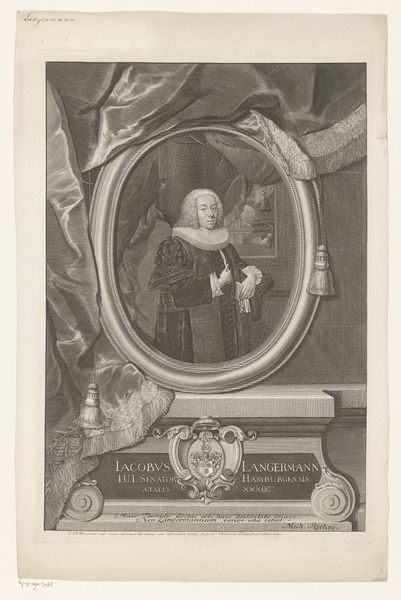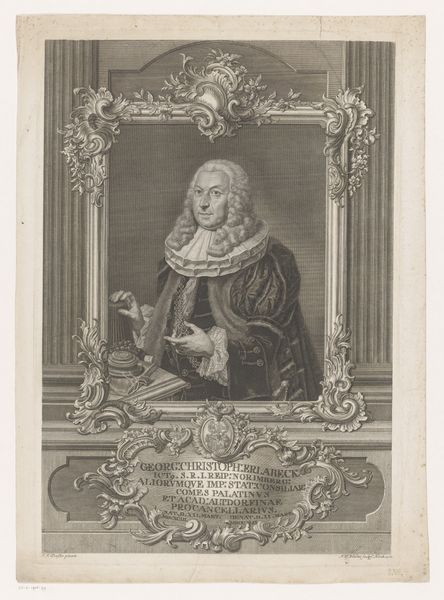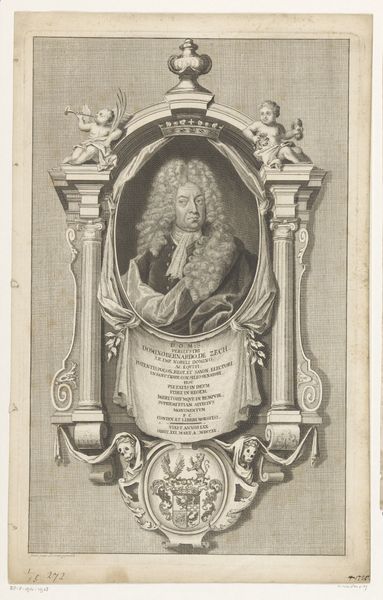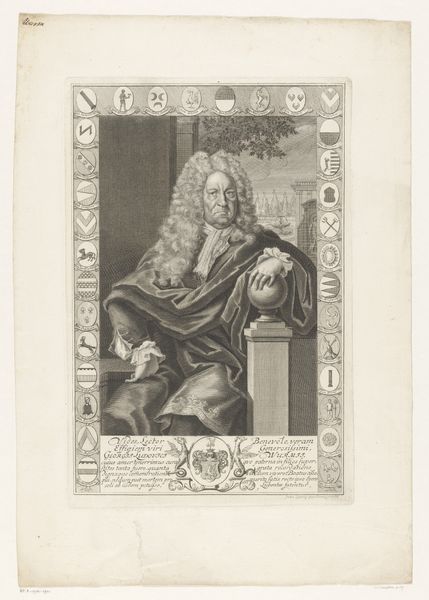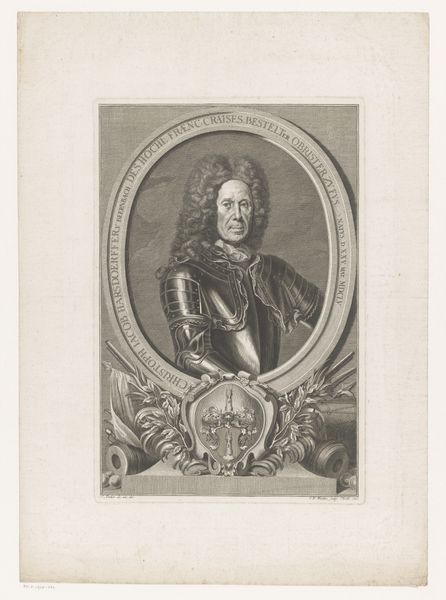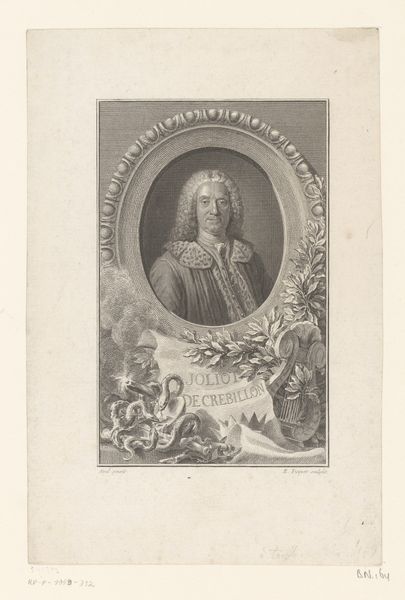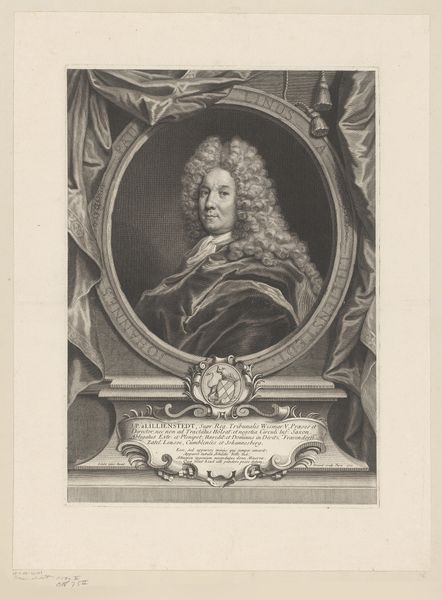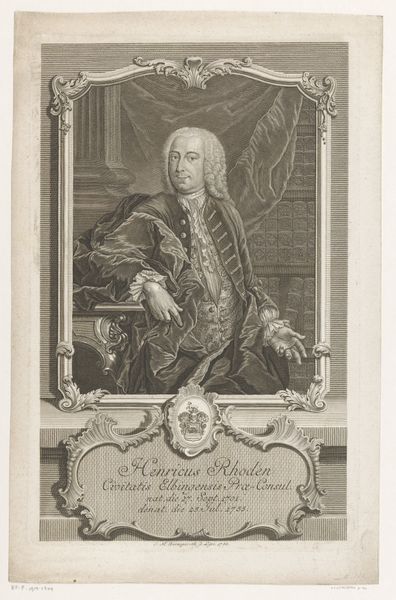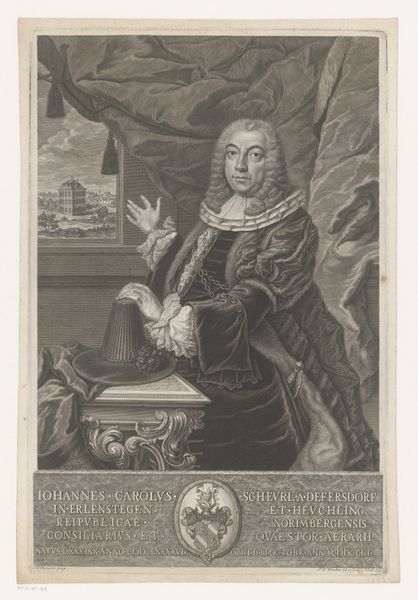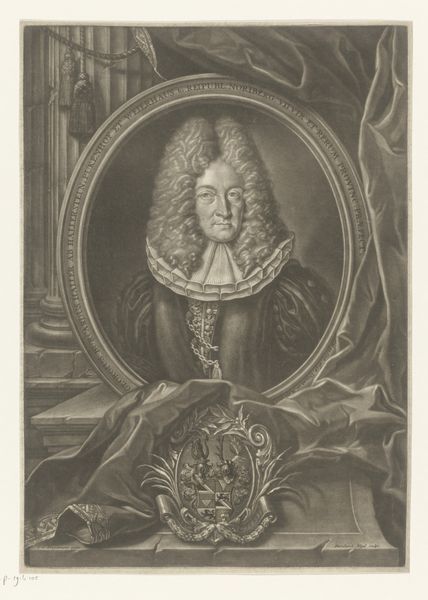
engraving
#
portrait
#
aged paper
#
toned paper
#
baroque
#
old engraving style
#
personal sketchbook
#
history-painting
#
engraving
Dimensions: height 390 mm, width 279 mm
Copyright: Rijks Museum: Open Domain
Curator: Let's discuss this striking portrait by Andreas Matthäus Wolfgang: an engraving titled "Portret van Johann Friedrich Löffelholtz von Colberg," created sometime between 1676 and 1737. What is your initial reading of the work? Editor: Immediately, I'm struck by its commanding presence. There's an almost theatrical quality; the subject gazes directly out, enveloped in these rich, swirling textures. It projects authority, doesn't it? Curator: Indeed. The oval frame itself, embedded within the larger rectangular composition, establishes a visual hierarchy. Note how Wolfgang employs the technique of chiaroscuro to sculpt Löffelholtz’s face and costume. The subtle gradations create a convincing sense of three-dimensionality, despite the inherent limitations of engraving. Editor: I find the frame itself fascinating, too. It looks like a stage curtain. And the cartouche below featuring coats of arms suggests he’s part of something bigger, a lineage perhaps? I'm curious about the symbols within the crest. Curator: Precisely. The iconography surrounding his image reinforces his status. One should observe that the subject’s gaze meets ours head-on. This technique was common for the period as the figure intends to look reliable, commanding respect through direct address. Editor: There’s such meticulous detail in rendering his attire. I want to understand what such clothing signifies for a man in his position and time. That enormous collar; that robe… these pieces serve not just a protective function, but one that helps illustrate social station. Curator: Absolutely. Consider the textures: the velvety softness of the coat, the crispness of the ruff. Wolfgang masterfully manipulates the burin to evoke contrasting tactile sensations. Note how the directionality of the lines follows the contours of the form, enhancing the illusion of depth. Editor: Overall, considering the scale and execution here, the piece stands out with striking immediacy, almost demanding our respect and attention from across the centuries. It almost reads as less portrait and more as historical symbol. Curator: Well said. The formal and historical considerations coalesce, giving us both insight into its historical context, and highlighting Wolfgang's skill.
Comments
No comments
Be the first to comment and join the conversation on the ultimate creative platform.


